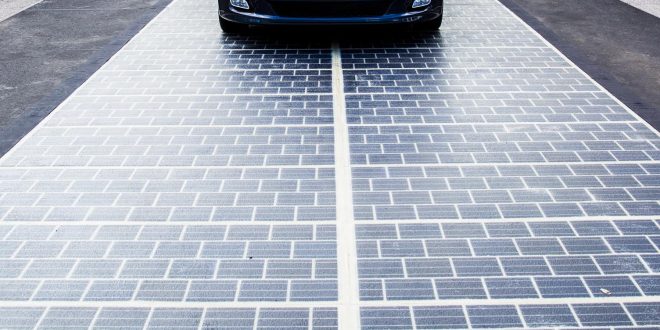As our global community endeavors to strike a delicate equilibrium between the imperative of robust transportation networks and the urgency of safeguarding our planet, the integration of pioneering methodologies and sustainable practices is imperative to diminish the ecological footprint associated with road construction. This comprehensive guide embarks on an expedition to delve into an array of strategies and techniques poised to effectively alleviate the environmental impacts characteristic of road construction projects, thereby ushering in a new era of infrastructure development that resonates harmoniously with ecological preservation.
Sustainable Materials Selection
Central to the endeavor of mitigating the environmental ramifications of road construction is the deliberate curation of materials in a manner that espouses sustainability. The quintessential asphalt, which has long held its place as a staple, is now met with alternatives that present more eco-friendly profiles. The likes of reclaimed asphalt pavement (RAP) and recycled concrete aggregate (RCA) step into the limelight, offering the means to quell the insatiable appetite for virgin resources while concurrently tempering the energy-intensive procedures linked to the creation of novel construction materials. Moreover, the deployment of avant-garde binding agents, encompassing bio-based binders and geopolymer materials, emerges as a potent catalyst, further diminishing the carbon-intensive footprint typically intertwined with road construction.
Erosion and Sediment Control
The challenge of soil erosion and sedimentation assumes paramount importance during road construction, their consequences rippling through soil integrity and water purity. Endeavors directed towards erecting an arsenal of erosion control measures, encompassing the likes of silt fences, sediment basins, and hydroseeding, stand resolute in curtailing the migration of soil particles and stymieing the unrelenting flow of sediment-laden runoff into the waiting arms of adjacent water bodies. In doing so, not only are the tenets of soil preservation upheld, but also the veritable sanctity of aquatic ecosystems is preserved, underpinning an intricate ecological equilibrium.
Efficient Water Management
Intricately interwoven with the endeavor of curtailing the environmental toll of road construction is the meticulous management of water, a resource of unparalleled significance in the context of local hydrology. The realization of detention ponds, bioswales, and permeable pavements emerges as a tangible method to navigate the labyrinth of stormwater runoff, replenishing groundwater reserves while concurrently attenuating the specter of flooding events. These meticulously crafted strategies, underpinned by the emulation of natural water infiltration processes, collectively conspire to perpetuate the intricate balance intrinsic to the neighboring environment.
Energy Efficiency and Emissions Reduction
The machinery and processes implicated in road construction bear a sizable carbon footprint, a reality that beckons proactive measures in the form of energy-efficient equipment, adoption of alternative fuels, and an innovation-laden overhaul of construction methodologies. The advent of electric and hybrid machinery, orchestrated in symphony with judicious construction scheduling, emerges as a beacon of hope, potentially chiseling away at emissions and in the process, contributing valiantly to the overarching battle against the specter of climate change.
Minimization of Land Disruption
At the crux of the conventional road construction process lies a requirement for substantial land modification, a process that often precipitates habitat obliteration, soil degradation, and disruptions in the prevailing drainage patterns. The application of trenchless technology for utility installation stands as a formidable approach to circumventing extensive excavation and preserving ecologically sensitive pockets that would otherwise bear the brunt of construction activities. Moreover, the contemplation of narrower road alignments coupled with the exploration of elevated road designs, together with professional heavy equipment hire that’s always welcomed in this day and age, unveils a realm of possibilities in terms of constraining the extent of land perturbation, thus orchestrating the retention of natural landscapes in the face of progress.
Stakeholder Engagement
As the discourse veers towards the orchestration of a more environmentally conscious road construction paradigm, the integration of local communities and stakeholders into the planning and execution processes metamorphoses into a linchpin. This symbiotic engagement unfurls a treasure trove of insights, meticulously cataloging ecologically sensitive zones, culturally sacrosanct sites, and potential mitigation stratagems that would otherwise languish in obscurity. This inclusive trajectory engenders outcomes that harmonize the aspirations of the community with the imperatives of environmental stewardship.
Lifecycle Assessment and Maintenance
The reverberations of road construction ripple across temporal thresholds, bearing repercussions beyond the initial phases. Embracing the tenets of lifecycle assessment unveils a holistic understanding of the enduring ecological ramifications of disparate construction approaches. To this end, nurturing a culture of sustained maintenance and timely repair of roads stands as an indispensable facet, elongating their operational lifespan, thereby circumventing the cyclical demands for recurrent reconstruction, a cycle intrinsically allied with amplified environmental repercussions.
By doing everything mentioned here, the scales that tip in favor of the adverse consequences of road construction can be recalibrated. Furthermore, the collaborative engagement of local communities and the execution of far-reaching assessments across the lifecycle of a road construction endeavor emerge as pivotal milestones in a trajectory that converges development with ecological conservation. As technology progresses and consciousness burgeons, the roadmap towards environmentally sagacious road construction practices unfurls, culminating in a vista that augurs a future where infrastructure development strides hand in hand with the pristine preservation of our planet.



